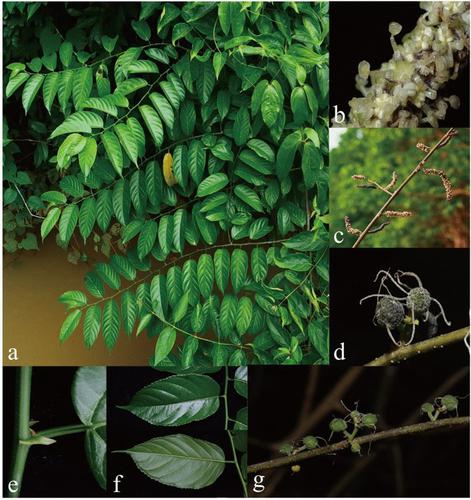Scientific Reports ( IF 3.8 ) Pub Date : 2024-09-30 , DOI: 10.1038/s41598-024-73941-4 Li-Na Zhou, Lang-Xing Yuan, Pan Li, Bo-Liang Wei, Jin-Rui Lei, Zong-Zhu Chen, Zhi-Hua Zhang, Xin-Jie Jin, Yi-Qing Chen, Yong-Hua Zhang

|
The small genera Allaeanthus and Malaisia within the Moraceae have important edible, medicinal, and economic value. However, complete plastome blueprints and a well-resolved evolutionary history of these two genera are still lack, thereby limiting their conservation and application. The recent discovery of a new distribution of Allaeanthus kurzii in Hainan, China, marked by the collection of two unique samples, alongside three samples of Malaisia scandens, has opened new avenues for research. This study aimed to compare the Allaeanthus and Malaisia plastomes of Hainan Province samples with those of samples from other regions, focusing on plastome structure, codon usage bias, natural selection, and the evolutionary history of A. kurzii and M. scandens. The results showed that both species had a quadripartite plastome structure, with sizes ranging from 162,134 to 162,170 bp for A. kurzii and 161,235 to 162,134 bp for M. scandens. Both species displayed loss of the infA gene and reduction of the rpl22 gene. Two highly variable regions (petD-trnD-GUC and rpl20-clpP) and three highly variable genes (rpl20, petB, and rpl16) were identified in A. kurzii, while two highly variable regions (ycf2-ndhB and ccsA-ndhE) and three highly variable genes (psbT, rpl36, and ycf2) were found in M. scandens. The protein-coding sequences (CDSs) of the Allaeanthus and Malaisia plastomes exhibited similar patterns of adaptive indices and codon usage frequencies. The genes associated with photosynthesis underwent strong purifying selection. Phylogenetic analysis revealed that Allaeanthus, Broussonetia, and Malaisia constituted a monophyletic group, with Malaisia being more closely related to Broussonetia. Broussonetia diversified approximately 19.78 million years ago, Malaisia approximately 4.74 million years ago, and Allaeanthus approximately 16.18 million years ago. These new plastome-based discoveries will guide conservation planners and medicinal plant breeders and genetic resource development for these species in the region.













































 京公网安备 11010802027423号
京公网安备 11010802027423号